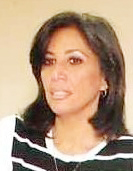
This week I was invited to an Organisation for Security and Co-operation in Europe (OSCE) meeting in the Austrian capital Vienna. The gathering, held to discuss the safety of journalists working in areas of conflict and civil unrest, was part of the organisation’s continued efforts to bolster security and increase cooperation between the organisation’s 56 member states. In recent years, representatives of six Mediterranean ‘partner’ states – Algeria, Egypt, Israel, Jordan, Morocco and Tunisia (which enjoy close relations with the OSCE countries) have been invited to attend the OSCE forums as the realisation grew that security in Europe is closely linked with security with the Mediterranean as a whole.
Dunja Mijatovi, OSCE Representative for Freedom of the Media reminded participants of the fundamental importance of freedom of expression as an essential tool for the defence of all other rights, and as a core element of democracy. She also told the gathering that violence and other crimes against those exercising their right of freedom of expression – including journalists – “have a chilling effect on the free flow of information and represent attacks not only the victims but also on the right of others to seek and receive information and ideas.”
Listening to her words, I could not help but remember the shocking attack on Lara Logan in Tahrir Square on 11 February 2011. The CBS reporter was sexually assaulted by a mob of around 200 men as Egyptians were celebrating after long time dictator Hosni Mubarak stepped down. Unfortunately that attack was not an isolated incident. It was followed by several similar attacks on female journalists covering the Tahrir protests in the months that followed. In November 2011, two female journalists were attacked by security forces in Cairo and later described disturbing accounts of violent assaults – again by mobs – as the journalists tried to cover anti-military protests in and near Tahrir Square. One of the women, an Egyptian–American journalist, later said she had also been sexually assaulted by police during her detention. Last month, a British reporter was also brutally assaulted in Tahrir Square as thousands gathered to celebrate the presidential election results.
All four violent attacks involve female journalists providing critical coverage of the events. What is also common between the tragic incidents is that the attackers were a mob of angry men who were thought to be protesters. But were they really? I find that hard to believe; it is highly unlikely that peaceful protesters would want to give themselves a bad image by carrying out such attacks. Also, instances of sexual violence are not new to Egypt. I clearly remember that female journalists and protesters were targeted during anti government protests in 2005. At the time, security men in plain clothes had carried out the attacks. The attacks on the female correspondents in Tahrir do not differ much from the 2005 attack on journalists. It is, after all, easy to deter female journalists through sexual assault. And it is not just foreign journalists that face such attacks. Many more local journalists have been targeted than foreigners but it appears that there is more international attention when the journalist is foreign. I have yet to meet one female journalist in Egypt who hasn’t at least been groped while covering protests anywhere in the country.
Some media organisations have, in recent months, considered sending male reporters instead to cover protests, but male journalists too may face grave dangers working in conflict zones, including being subjected to physical violence. What is important is that the journalists – male or female – who are sent to work in dangerous areas undergo training beforehand so that they may be able to cope and survive in hostile environments. Caution and preparatory research are of paramount importance to moving safely about in such environments.
“Sexual harassment and assault are on the agenda in a much more significant way since the attack on Logan in Tahrir Square,” the BBC’s Lyse Ducett recently told a gathering of female journalists in London.
Indeed, if any good has come of the attack on Lara Logan, it is the fact that speaking about it publicly has made western female journalists covering protests more cautious. It is a sad fact that newswomen in conflict zones face physical threats to their safety because of their gender. OSCE member states have suggested that in countries where crimes against freedom of expression are committed, victims should be able to pursue appropriate civil remedies proportionate to the gravity of the violations including financial compensation and a range of measures to rehabilitate the victims. They have also urged inter governmental organisations to continue to prioritise the fight against impunity for crimes against freedom of expression. Media organisations too should be encouraged to provide adequate safety, risk awareness, self protection training and guidance to all employees along with security equipment where necessary, they said.
While the above suggestions may indeed be effective, it may also be useful for women journalists working in hotspots to exchange experiences with counterparts also working in hotspots to lend each other guidance and support. And for those who launch attacks on journalists to stop the free flow of information, perhaps no message is as fitting as the following words from Chilean poet Pablo Neruda: “You can cut the flower but you cannot stop the coming of spring…”



